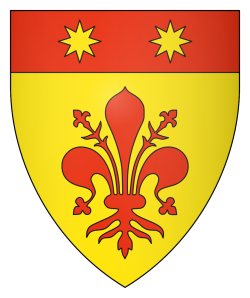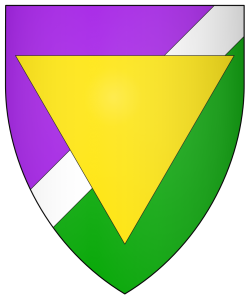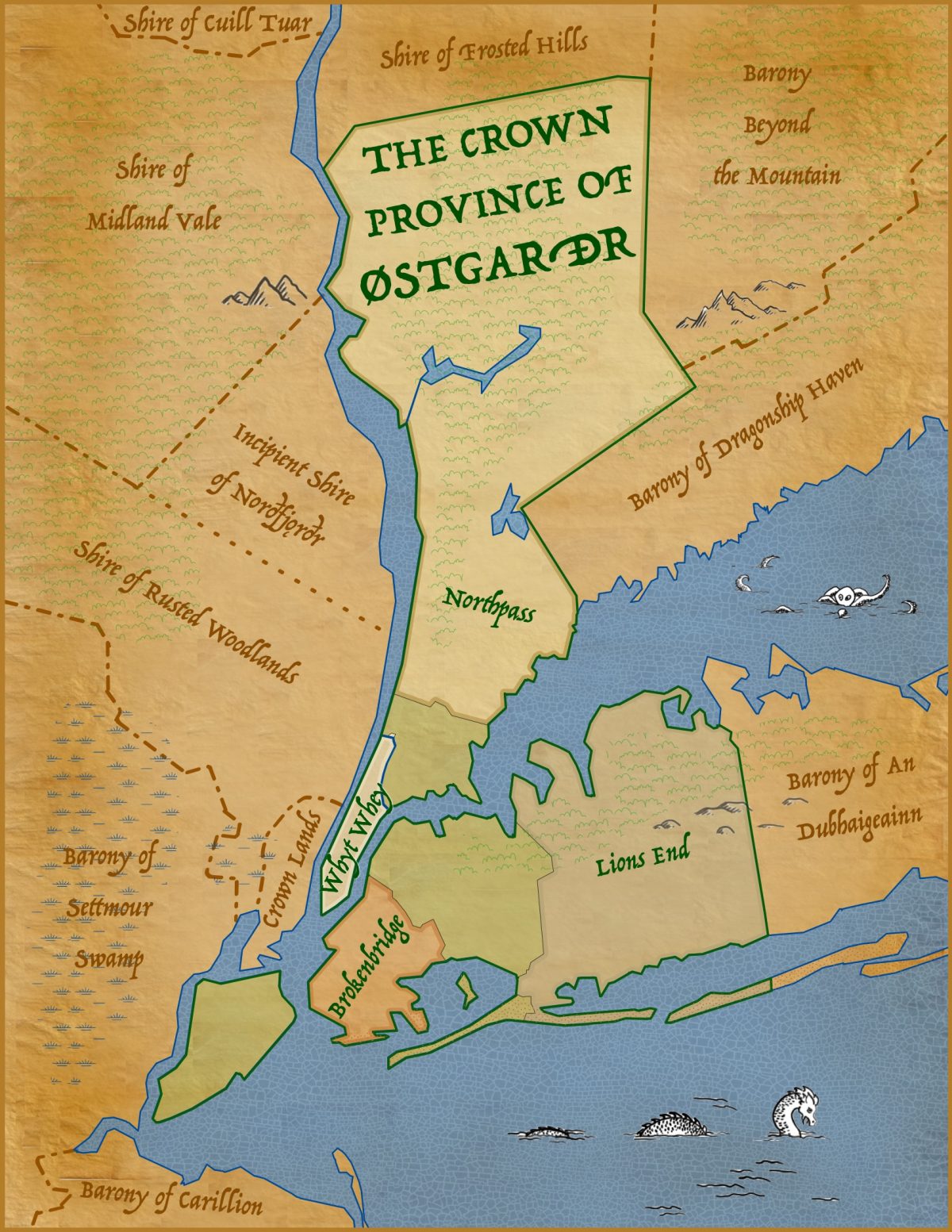Or, a Florentine fleur-de-lys and on chief gules two mullets of eight points Or.
Lady Sofya came up with an initial design for her armory last year, but the submission paperwork was never finalized and she wanted to make a few tweaks.
Her persona resides in northern Italy and she’d previously selected the Florentine fleur-de-lys as her primary charge, as well as choosing red and gold as her personal colors. In the course of the design process she identified the eight-pointed star as a recurring theme in Italian heraldry and included that as well.
Continue reading “Arms and Badge for Lady Sofya Gianetta di Trieste”

 Per bend sinister purpure and vert, a bend sinister argent, overall an inverted triangle Or.
Per bend sinister purpure and vert, a bend sinister argent, overall an inverted triangle Or.


